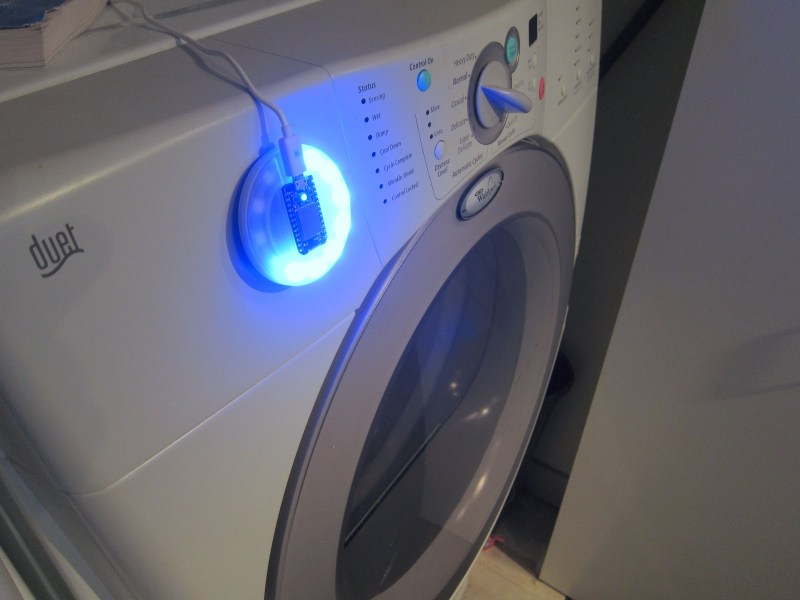With the Internet of things, lots of secret conversations will be going on between your appliances, your car, your computer, and other devices.
But today do-it-yourself kit maker Spark.io is poking a hole into that web of hidden communications — and adding a button.
It’s a real, physical peripheral for the Internet of things, called the Spark Internet Button, and it’s hooked up to IFTTT. I prefer to simply call it SIB.
IFTTT stands for “if this, then that,” and it’s a separate company. By creating simple “recipes” on the IFTTT website that connect a trigger condition to an action, a user can create a customized response to a button push.
AI Weekly
The must-read newsletter for AI and Big Data industry written by Khari Johnson, Kyle Wiggers, and Seth Colaner.
Included with VentureBeat Insider and VentureBeat VIP memberships.
Spark.io is also announcing its own channel on IFTTT today, and recipes can create actions between channels. The other 160 channels include those set up by Facebook, ESPN, Evernote, and Nest.
The underside of the $50 SIB actually contains four smaller buttons, and on the top there’s a Photon Wi-Fi module. Preorders are available now, and shipments start in March.
You can press down on one side of the front plate to trigger one of those buttons underneath. Or you could press on the center of the plate to trigger all four buttons, so you could, for instance, send a different text to four different family members with one push. LED lights on the front indicate which button(s) is being pushed.
You can set up the button assignments — without any programming — by logging on the IFTTT site, designating your home network and then this SIB, and using IFTTT’s tools to create recipes for the SIB. Recipes might include:
- If I tap a button every time my football team makes a touchdown, a connected confetti shooter pops and connected lights flash.
- When I tap a button on entering my home, all connected lights and devices that I’ve selected will turn on.
- When I tap a button on the way out of my office, send this text message to my wife that I’m on my way home.
- Tap this button, attached to an office desk, to call a cab for this address.
So, instead of using an app’s specific range of functions to manage the Internet of things, you can set up your own trigger/actions — and start them by touching an actual button.
More adventurous sorts can actually customize the button by writing simple code on Spark’s SIB site, which then reprograms the button wirelessly.
And the truly pioneering can take the IFTTT-linked chip out of the SIB and use it in other devices. You could, for instance, attach a temperature-sensor that, when placed in a hot tub, wirelessly posts a note in Google Calendar to read “hot tub time” for today when the right temperature is reached.
SIB also has a three-axis accelerometer so that, let’s say, the button can work with a washing machine. When the machine stops washing, a text message can so inform you.
The San Francisco-based Spark.io makes “hardware and software tools for people making connected products,” CEO and founder Zach Supalla told me. “We take off-the-shelf products and give people” tools for the Internet of things, for both do-it-yourselfers and businesses.
Supalla pointed to other do-it-yourself electronics companies, such as Arduino, Raspberry Pi, Electric Imp, and Little Bits that, like Spark.io, use open-source software and off-the-shelf components.
But the only Internet button competitor, he said, is a Finland-based company called Bt.tn that “makes a big red button.” The difference, he said, is that Bt.tn’s button “starts and ends with the button,” without Spark’s range of do-it-yourself capabilities.
VentureBeat's mission is to be a digital town square for technical decision-makers to gain knowledge about transformative enterprise technology and transact. Learn More

